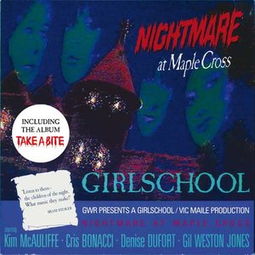
Understanding Cross Bite: A Comprehensive Guide

Have you ever noticed that your top teeth don’t quite align with your bottom teeth when you bite down? If so, you might have a condition known as a cross bite. This dental misalignment can affect your smile, speech, and overall oral health. In this detailed guide, we’ll explore the causes, symptoms, and treatment options for cross bite, providing you with all the information you need to understand this common dental issue.
What is a Cross Bite?

A cross bite occurs when the upper teeth are positioned inside the lower teeth when biting down. This misalignment can affect one or both jaws and can be caused by a variety of factors, including genetics, poor oral habits, or developmental issues.
Causes of Cross Bite

Several factors can contribute to the development of a cross bite:
| Factor | Description |
|---|---|
| Genetics | A family history of cross bite can increase your risk of developing the condition. |
| Poor Oral Habits | Thumbsucking, pacifier use, or tongue thrusting can lead to misalignment of the teeth. |
| Developmental Issues | Problems with the growth and development of the jaw or teeth can cause a cross bite. |
| Accidents or Trauma | Injuries to the mouth or face can disrupt the alignment of the teeth. |
Symptoms of Cross Bite
While some individuals may not experience any symptoms, common signs of a cross bite include:
- Difficulty biting or chewing
- Speech difficulties, such as lisping
- Pain or discomfort in the jaw or face
- Unattractive smile
Diagnosis and Treatment
If you suspect you have a cross bite, it’s important to consult with a dentist or orthodontist. They can diagnose the condition through a physical examination and may use X-rays or dental models to assess the alignment of your teeth and jaws.
Non-Invasive Treatment Options
In some cases, a cross bite can be corrected without surgery. These non-invasive treatment options include:
- Braces: Braces can be used to gently move the teeth into their proper position.
- Retainers: After braces are removed, retainers may be used to maintain the new alignment of the teeth.
- Space maintainers: These appliances are used to prevent the teeth from shifting out of place while the jaw is still developing.
Invasive Treatment Options
In more severe cases, surgery may be necessary to correct a cross bite. These options include:
- Jaw surgery: This procedure involves realigning the jaws to correct the misalignment.
- Orthognathic surgery: This is a more extensive form of jaw surgery that can correct severe misalignments.
Preventing Cross Bite
While some factors contributing to a cross bite are beyond your control, there are steps you can take to reduce your risk:
- Avoid thumbsucking or pacifier use after the age of two
- Encourage good oral hygiene habits
- Seek treatment for any dental issues early on
Conclusion
A cross bite can be a challenging dental issue, but with proper diagnosis and treatment, it can be corrected. By understanding the causes, symptoms, and treatment options for cross bite, you can take the necessary steps to maintain a healthy, aligned smile.



